- Clone
- WM53 (See other available formats)
- Workshop
- IV M-505
- Other Names
- Siglec-3, gp67, p67
- Isotype
- Mouse IgG1, κ
- Ave. Rating
- Submit a Review
- Product Citations
- publications

-

Typical results from human peripheral blood monocytes stained either with WM53 PE used at 5 µL/test (filled histogram) or with an isotype control (open histogram).
| Cat # | Size | Price | Quantity Check Availability | Save | ||
|---|---|---|---|---|---|---|
| 260192 | 100 tests | 244€ | ||||
CD33 is a 67 kD type I transmembrane glycoprotein also known as Siglec-3, gp67, and p67. It is a sialoadhesion immunoglobulin superfamily member expressed on myeloid progenitors, monocytes, granulocytes, dendritic cells and mast cells. CD33 is absent on normal platelets, lymphocytes, erythrocytes and hematopoietic stem cells. CD33 functions as a sialic acid-dependent cell adhesion molecule with carbohydrate/lectin binding activity.
Product DetailsProduct Details
- Reactivity
- Human
- Antibody Type
- Monoclonal
- Host Species
- Mouse
- Immunogen
- Human myeloid leukaemia cells.
- Formulation
- Phosphate-buffered solution, pH 7.2, containing 0.09% sodium azide and 0.2% (w/v) BSA (origin USA).
- Preparation
- The antibody was purified by affinity chromatography and conjugated with PE under optimal conditions.
- Concentration
- 200 µg/mL
- Storage & Handling
- The antibody solution should be stored undiluted between 2°C and 8°C, and protected from prolonged exposure to light. Do not freeze.
- Application
-
FC - Quality tested
- Recommended Usage
-
Each lot of this antibody is quality control tested by immunofluorescent staining with flow cytometric analysis. For flow cytometric staining, the suggested use of this reagent is 5 µL per million cells in 100 µL staining volume or 5 µL per 100 µL of whole blood. It is recommended that the reagent be titrated for optimal performance for each application.
- Excitation Laser
-
Blue Laser (488 nm)
Green Laser (532 nm)/Yellow-Green Laser (561 nm)
- Application Notes
-
Additional reported applications (for the relevant formats) include: immunoprecipitation, Western blotting3, induction of cytokine production3, and immunofluorescence4. The Ultra-LEAF™ purified antibody (Endotoxin < 0.01 EU/µg, Azide-Free, 0.2 µm filtered) is recommended for functional assays (Cat. Nos. 303437 & 303438).
- Application References
-
- Knapp W, et al. 1989. Leucocyte Typing IV. Oxford University Press. New York.
- Favaloro E, et al. 1988. Br. J. Haematol. 69:163.
- Garnache-Ottou F, et al. 2005. Blood 105:1256. (WB)
- Pèrez-Oliva AB, et al. 2011. Glycobiology. 21:757. (epitope, FC, IF)
- Disclaimer
-
GMP RUO Flow Cytometry Antibodies. BioLegend GMP RUO fluorophore conjugated antibodies are manufactured in a dedicated GMP facility and compliant with ISO 13485:2016. For research use only. Not for use in diagnostic or therapeutic procedures. Our processes include:
- Batch-to-batch consistency
- Material traceability
- Documented procedures
- Documented employee training
- Equipment maintenance and monitoring records
- Lot-specific certificates of analysis
- Quality audits per ISO 13485:2016
- QA review of released products
Antigen Details
- Structure
- Ig superfamily, sialoadhesins, type I glycoprotein, 67 kD
- Distribution
-
Myeloid progenitor, monocytes, granulocytes, dendritic cells, mast cells
- Function
- Adhesion and lectin activity
- Ligand/Receptor
- Sugar chains containing sialic acid
- Cell Type
- B cells, Dendritic cells, Granulocytes, Hematopoietic stem and progenitors, Mast cells, Monocytes, Neutrophils
- Biology Area
- Cell Biology, Immunology, Neuroinflammation, Neuroscience
- Molecular Family
- CD Molecules, Siglec Molecules
- Antigen References
-
1. Favaloro E, et al. 1988. Br. J. Haematol. 69:163.
2. Freeman S, et al. 1995. Blood 85:2005. - Gene ID
- 945 View all products for this Gene ID
- UniProt
- View information about CD33 on UniProt.org
Related FAQs
- What type of PE do you use in your conjugates?
- We use R-PE in our conjugates.
Other Formats
View All CD33 Reagents Request Custom ConjugationCompare Data Across All Formats
This data display is provided for general comparisons between formats.
Your actual data may vary due to variations in samples, target cells, instruments and their settings, staining conditions, and other factors.
If you need assistance with selecting the best format contact our expert technical support team.
-
APC anti-human CD33
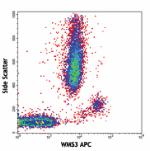
Human peripheral blood lymphocytes, monocytes, and granulocy... -
PE anti-human CD33

Human peripheral blood monocytes were stained with anti-huma... -
PE/Cyanine5 anti-human CD33

Human peripheral blood monocytes were stained with anti-huma... -
Purified anti-human CD33
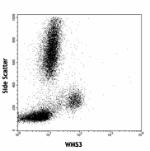
Human peripheral blood lymphocytes, monocytes, and granulocy... -
PerCP/Cyanine5.5 anti-human CD33
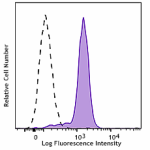
Human peripheral blood monocytes were stained with CD33 (clo... -
Brilliant Violet 711™ anti-human CD33

Human peripheral blood monocytes were stained with CD33 (clo... -
Brilliant Violet 421™ anti-human CD33
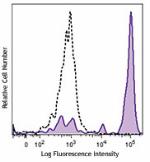
Human peripheral blood monocytes were stained with CD33 (clo... -
Brilliant Violet 570™ anti-human CD33
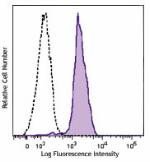
Human peripheral blood monocytes were stained with CD33 (clo... -
Purified anti-human CD33 (Maxpar® Ready)
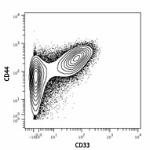
Human PBMCs stained with 166Er-anti-CD44 (BJ18) and 158Gd-an... -
Brilliant Violet 510™ anti-human CD33
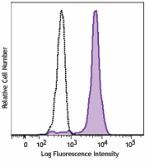
Human peripheral blood monocytes were stained with CD33 (clo... -
Biotin anti-human CD33
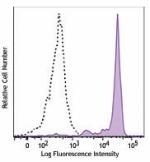
Human peripheral blood monocytes were stained with biotinyla... -
Brilliant Violet 785™ anti-human CD33
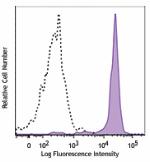
Human peripheral blood monocytes were stained with Brilliant... -
Brilliant Violet 650™ anti-human CD33
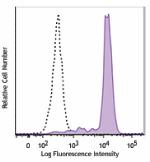
Human peripheral blood monocytes were stained with CD33 (clo... -
PE/Cyanine7 anti-human CD33
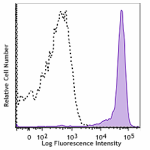
Human peripheral blood monocytes were stained with a mixture... 
Human peripheral blood lymphocytes, monocytes, and granulocy... -
PE/Dazzle™ 594 anti-human CD33
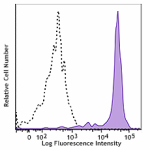
Human peripheral blood monocytes were stained with a mixture... 
Human peripheral blood lymphocytes, monocytes, and granulocy... -
APC anti-human CD33

Typical results from human peripheral blood lymphocytes, mon... -
Alexa Fluor® 700 anti-human CD33

Human peripheral blood monocytes were stained with human CD3... -
Ultra-LEAF™ Purified anti-human CD33
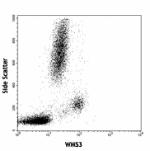
Human peripheral blood lymphocytes, monocytes, and granulocy... -
APC/Fire™ 750 anti-human CD33
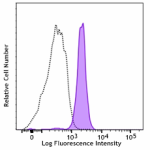
Human peripheral blood monocytes were stained with CD33 (clo... -
PerCP/Cyanine5.5 anti-human CD33

Typical results from human peripheral blood monocytes staine... -
APC/Cyanine7 anti-human CD33
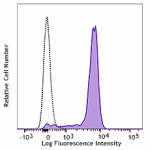
Human peripheral blood monocytes were stained with anti-huma... -
PE anti-human CD33

Typical results from human peripheral blood lymphocytes, mon... -
PE/Cyanine7 anti-human CD33
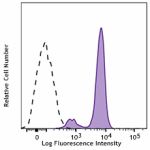
Typical results from human peripheral blood monocytes staine... -
GMP PerCP/Cyanine5.5 anti-human CD33

Typical results from human peripheral blood monocytes staine... -
Alexa Fluor® 647 anti-human CD33

Human peripheral blood monocytes were stained with anti-huma... -
GMP APC anti-human CD33
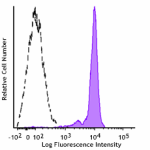
Typical results from human peripheral blood monocytes staine... -
GMP PE anti-human CD33
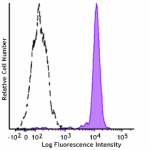
Typical results from human peripheral blood monocytes staine... -
PE/Fire™ 810 anti-human CD33
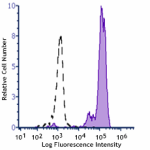
Human peripheral blood monocytes were stained with anti-huma... -
PE/Cyanine5 anti-human CD33
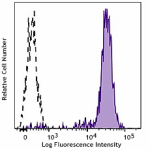
Typical results from human peripheral blood monocytes staine... -
Spark Blue™ 515 anti-human CD33

Human peripheral blood cells were surface stained with (left... -
PE/Fire™ 700 anti-human CD33
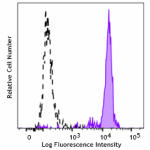
Human peripheral blood monocytes were stained with anti-huma... -
GMP PE/Cyanine5 anti-human CD33
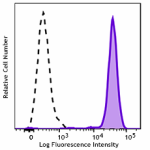
Typical results from human peripheral blood monocytes staine... -
Spark Violet™ 423 anti-human CD33

Human peripheral blood monocytes were stained with anti-huma... -
Brilliant Violet 605™ anti-human CD33

Human peripheral blood monocytes were stained with anti-huma...

 Login / Register
Login / Register 













Follow Us